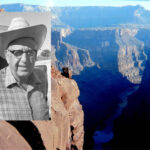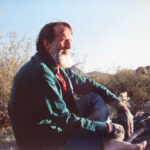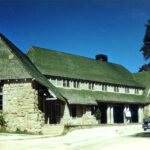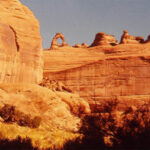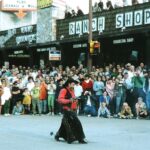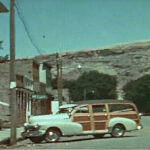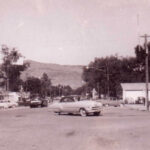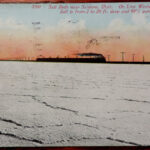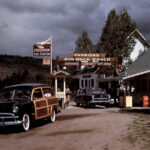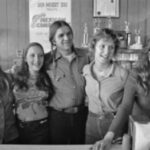
But in 1975, Glen Canyon City was the domain of the controversial polygamist and constant thorn in the butt of Kane County politicians— Alex Joseph. He and his cult had been booted from one federally owned section of land after another. But they finally found Glen City and nobody seemed to care. It was ready to fall down anyway. Here Alex would build his own kingdom. I had heard about Alex from a ranger friend at the dam. “If you’re headed for Kanab,” Popovich said, “stop at the Red Desert Cafe. The food’s good and you might get to meet some of Alex Joseph’s gorgeous wives.”
I was skeptical but I thought, what the hell. The next morning, I left Page and after the long incline from the lake, in the middle of nowhere, I spotted a collection of ramshackle houses and trailers, long abandoned cars and pickups, and a plethora of tumbleweed. You’d think they were raising it as a crop. The Red Desert Cafe didn’t look much better, but I was hungry and curious about those wives.
Sure enough, Popovich’s description was spot on. Alex was at the bar, looking a tad taciturn. Several of his wives were there too, some cooking and some working as waitresses. They were all over-qualified to be food servers. I learned that among Alex’s wives, one was a doctor, another was a lawyer. Another was a realtor…they were all quite lovely. Alex walked over and said hello. He had a beer gut and stringy black hair pulled back in pigtails and he needed a shave and I thought: What does this guy have that I don’t have?
Read more →
